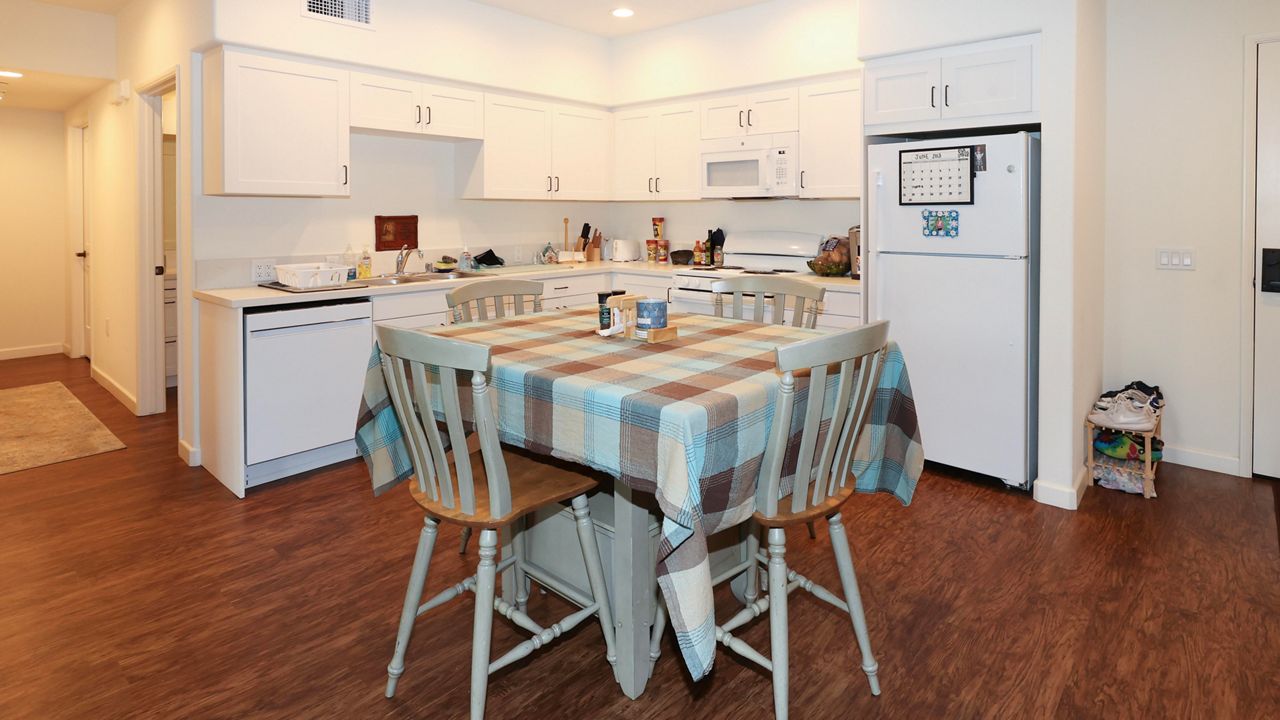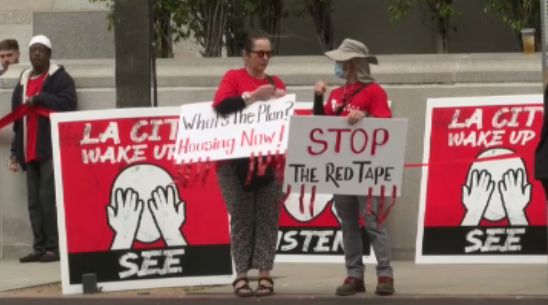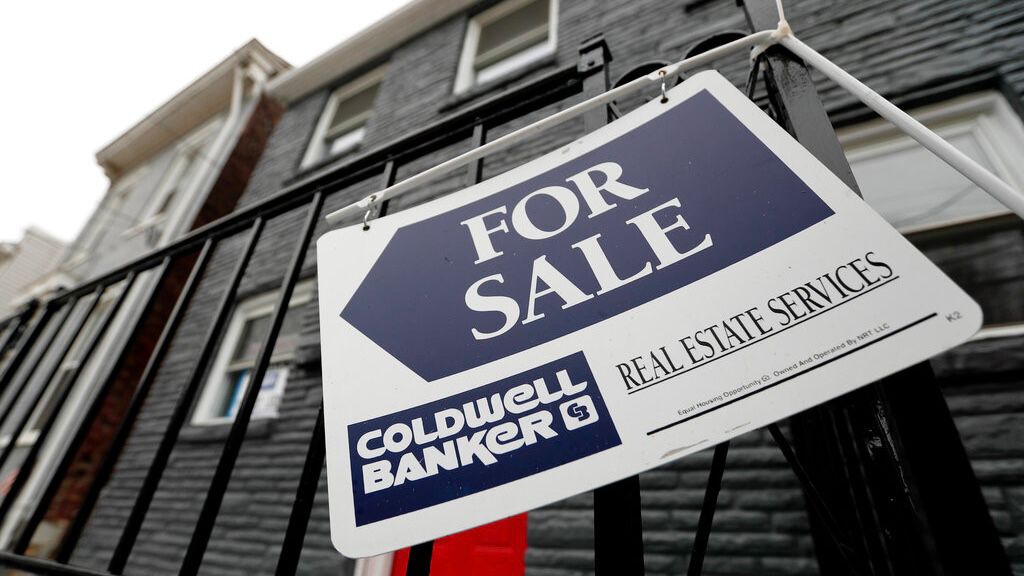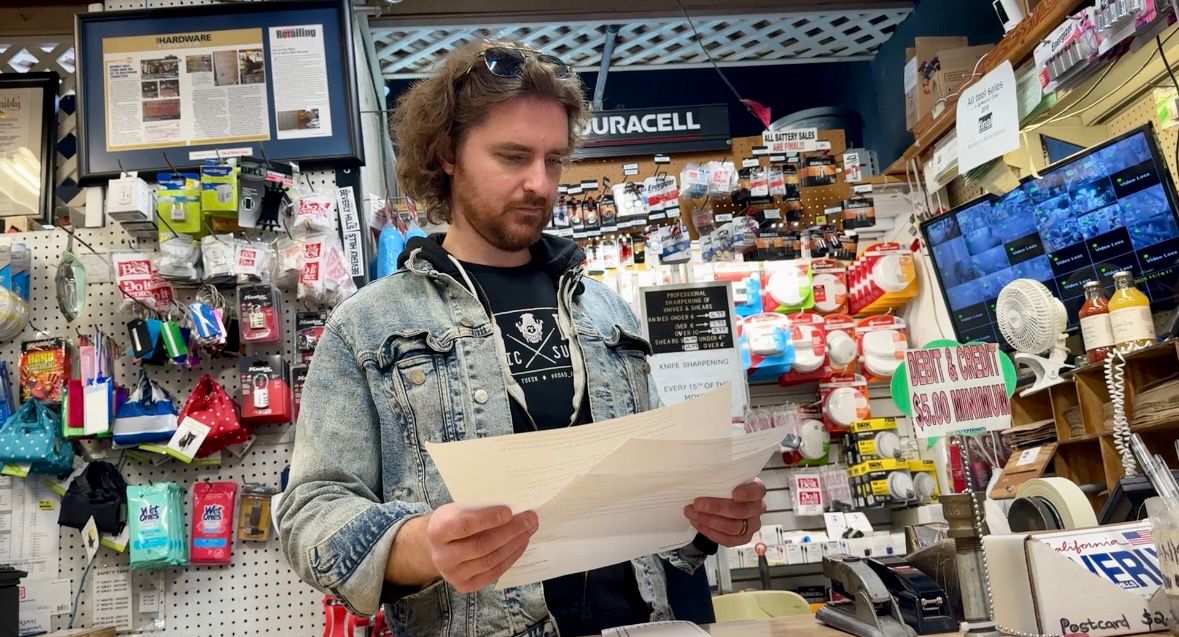LOS ANGELES — For years, the property at the corner of Missouri Avenue and Bundy Drive in West Los Angeles was an eyesore. The site of a former animal shelter, it had been abandoned and was a dilapidated blight.
But on Tuesday, city officials gathered to celebrate the property’s rebirth as a new apartment building that provides both affordable housing for low-income Angelenos and permanent supportive housing for families coming out of homelessness. The 74-unit building includes 29 affordable apartments, 44 permanent supportive units and one apartment for an on-site manager.
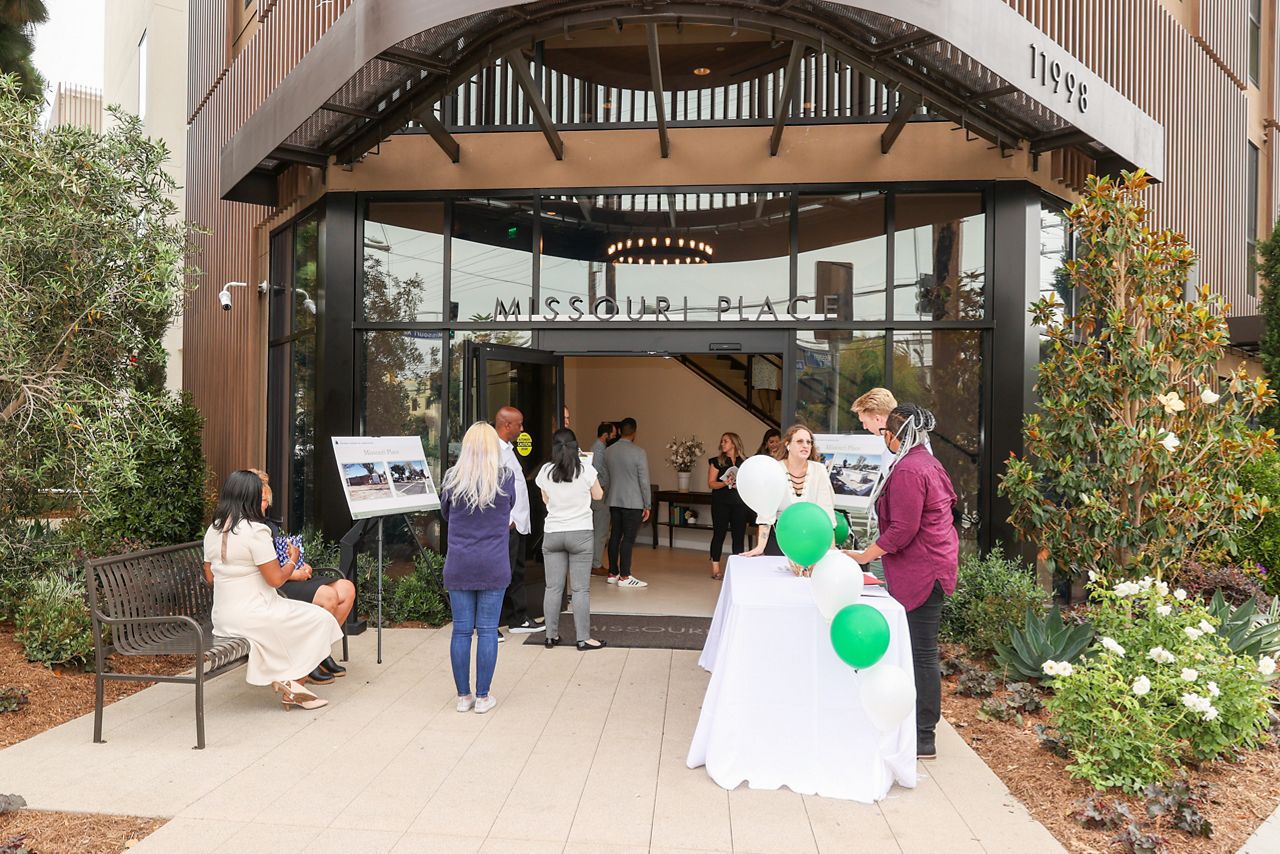
“We’re really proud that 60% of the residents who are living here are formerly homeless,” said Jordan Pynes, president of Thomas Safran & Associates, the developer that spearheaded the project. “They were on the street or in shelters when they moved in here or were living in their cars, and now they get to live on the Westside of Los Angeles where affordable housing is so desperately needed.”
The average monthly rent for a 789-square-foot apartment in West LA is $2,823, according to RentCafe.com. As expensive as that is, the median listing price for a home in the neighborhood is even worse: $1.1 million, according to Realtor.com.
With LA rents up 15% compared to a year ago, it’s no wonder that 600,000 Angelenos are now spending more than 90% of their income on rent, according to the United Way of Greater LA. That’s leaving more Angelenos one car crash or unexpected expense away from the sort of financial devastation that often leads to homelessness.
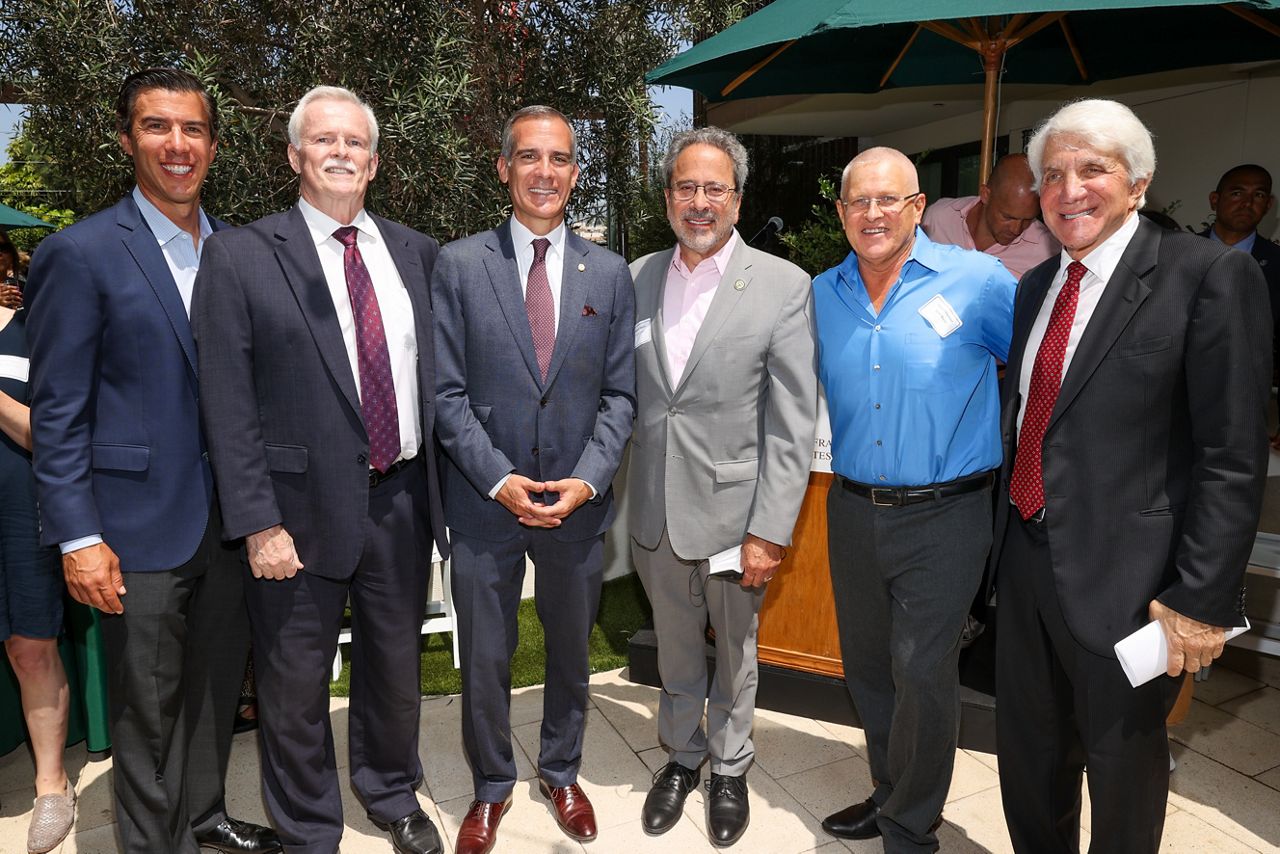
“There is only one thing that ends homelessness: homes,” LA City Council member Mike Bonin said Tuesday during the Missouri Place ribbon cutting. “These are homes for people, for families. These are homes that provide an opportunity for people to have privacy, to have dignity, to have security, to have stability, to transform their lives, to transform the lives of their families.”
Designed for families, the four-story Missouri Place building consists of one-, two- and three-bedroom units that can accommodate between five and nine people per unit. Square footage runs from 687 square feet for a one-bedroom to 1,300 square feet for a three-bedroom. All of the units are furnished and include beds and dressers, as well as bedding, pantry items and a welcome kit with food and cleaning products.
“We have people who move in with trash bags. That’s it. No luggage, no beds, no sheets, no TV. They need the basics to get going. It’s those little things that help create success,” Pynes said. “It’s a big transition.”
While there is no difference in the setup of the rooms based on who is renting them, formerly unhoused individuals in permanent supportive housing will have access to wraparound services provided by the nonprofit Imagine LA.
Imagine LA works with families to break the cycle of poverty, providing case management, economic mobility, resources and mentorship for all family members. For Missouri Place, it is providing two full-time caseworkers that will help families with everything from getting their finances in order and learning how to live in an apartment to setting up an electric bill and enrolling children in school.
“You’d be surprised how many people don’t understand how a garbage disposal works or what it means to be a good neighbor,” Pynes said. “We have all of that here to create success long term. That’s the goal: to keep people housed long term.”
Thomas Safran & Associates is a developer that builds market-rate, affordable and permanent supportive housing. The firm has agreed to keep Missouri Place as an affordable housing property for the next 55 years, Pynes said.
While Safran & Associates has only become involved in supportive housing over the last few years, the company has eight projects under construction that include some percentage of units for formerly unhoused individuals.
In development for five years, Missouri Place was funded in part with Proposition HHH, the ballot measure LA voters approved in 2016 that provides $1.2 billion in bonds to build 10,000 units of housing for homeless individuals. Prop HHH monies contributed $155,000 per unit, or $11.5 million total, to help build Missouri Place. The remainder of the building was funded with federal tax credits, state surplus monies and private commercial loans.
Including Missouri Place, the city of Los Angeles is on track to add 2,000 units of homeless housing this year and another 2,000 in 2023, LA Mayor Eric Garcetti said during the Missouri Place ribbon cutting.
Still, Garcetti acknowledged that the city is “about to head off a cliff” for affordable and homeless housing funding. He encouraged LA voters to support a November ballot initiative that will tax sales of properties valued at $5 million or more and use the funds to build affordable housing. The so-called mansion tax would increase funding for homeless housing initiatives from $100 million per year to half a billion, Garcetti said.
“You can either be pissed about homelessness or pissed about building solutions to homelessness, but you can’t be pissed at both,” Garcetti said at Missouri Place, just a few hours after attending a groundbreaking for a 63-unit supportive housing development in Wilmington. “You have to choose what you want to be angry about. If you don’t want something like this built in your neighborhood, then you’re going to have to accept that the homeless are going to be living on your streets.”






